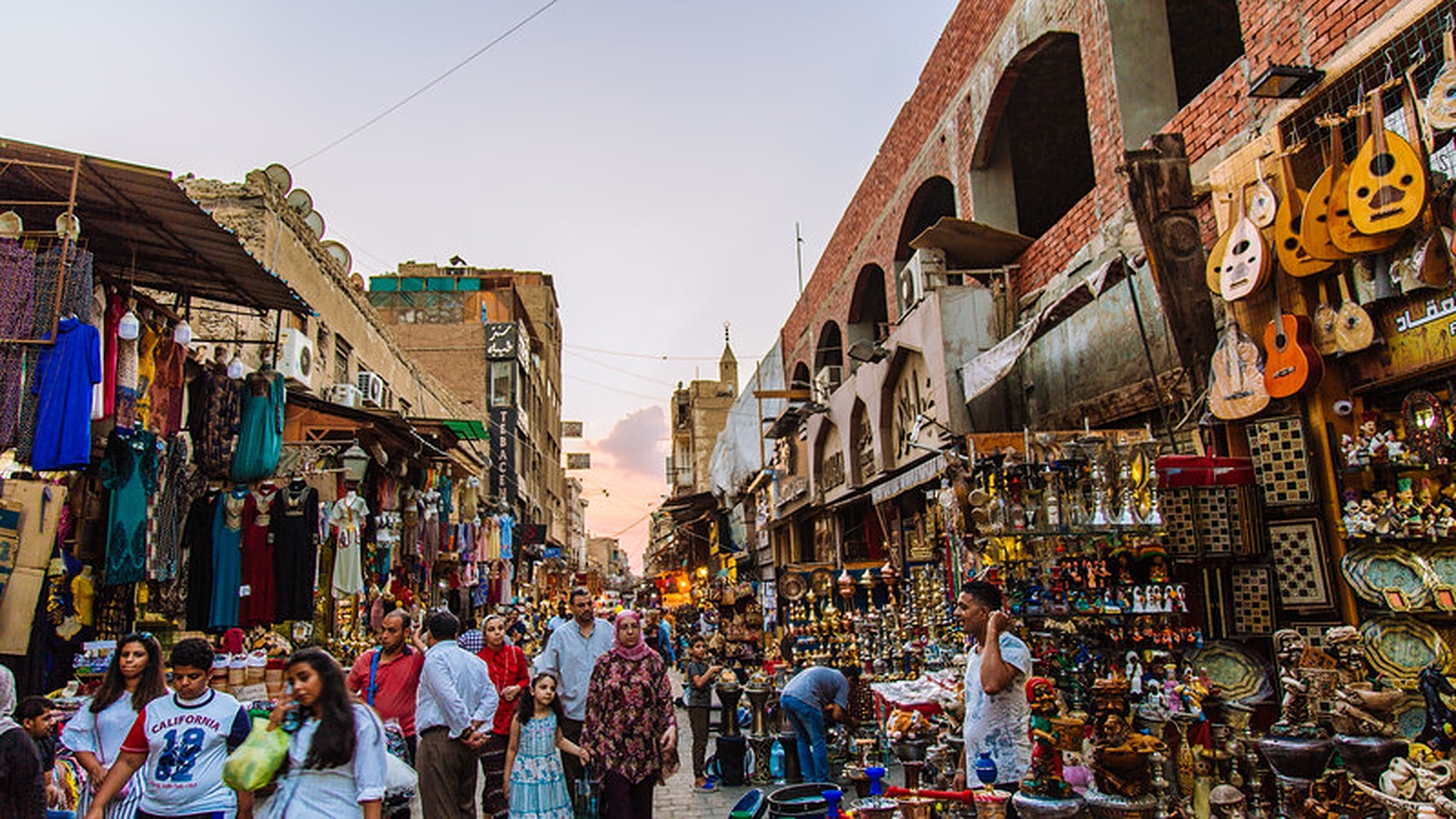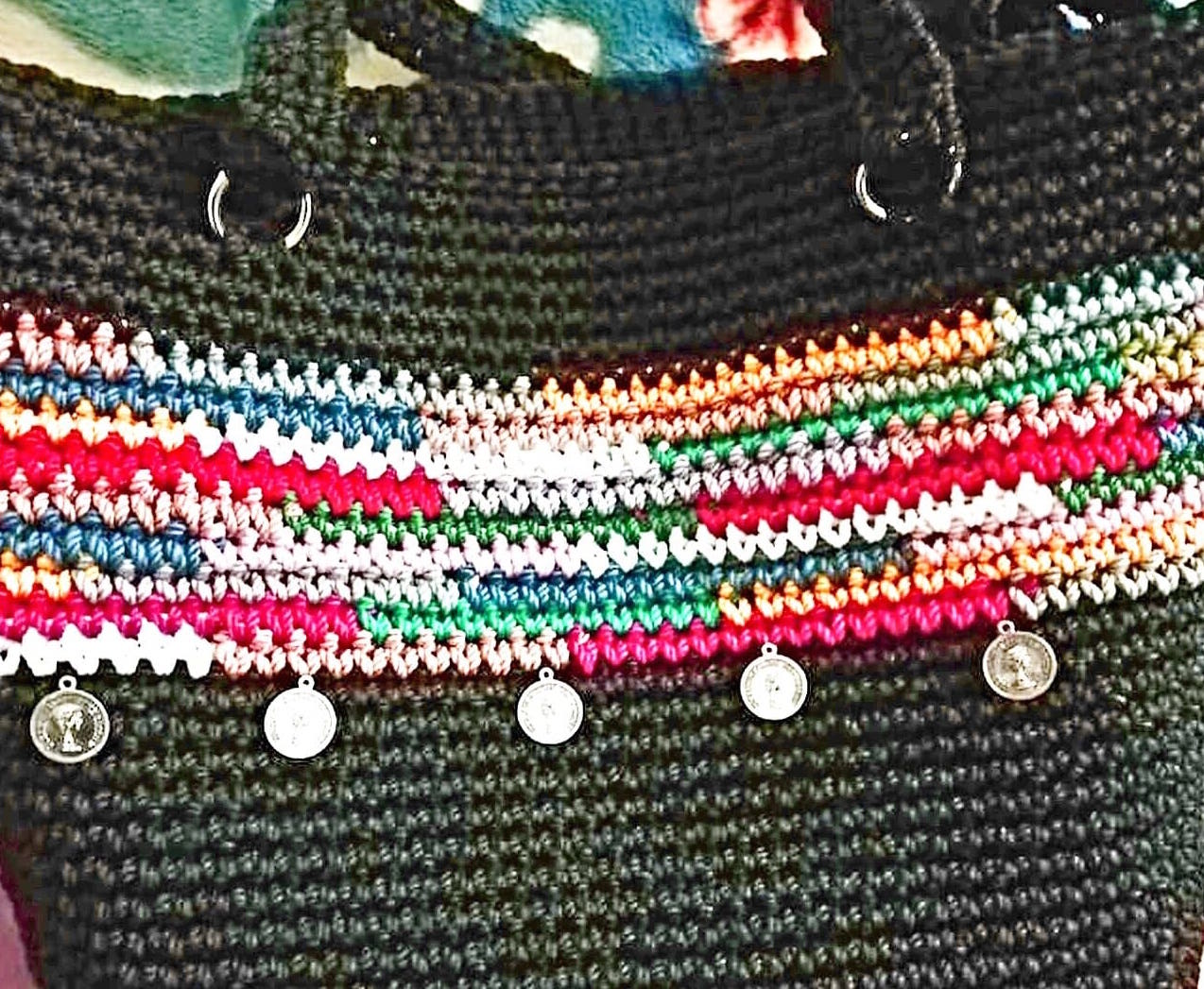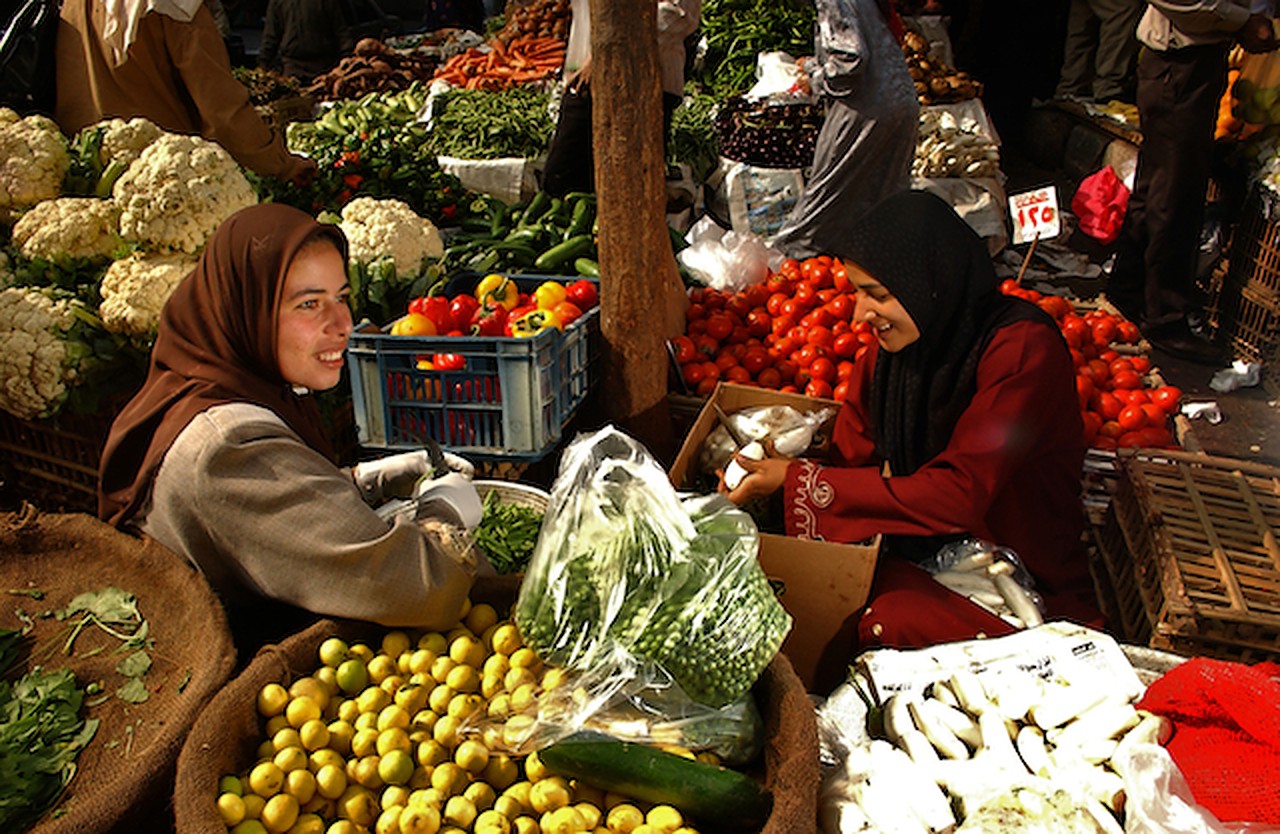
Everyday, Om Mohsen sells her handmade designs and handbags in the streets of Tahrir. I first saw her inside the metro crocheting a gorgeously designed purple-pink clutch bag next to her son, and beside her was a bag full of her own designs and handmade products.
“Do you sell this? Is it yours?” I asked her. “Yes, all of it is mine, but I don’t sell at the metro.”
She then showed me her entire collection with enthusiasm, from school bags to tote bags, clutches and handbags. “I spent a whole week making this,” she tells me and the other women in the metro. Many of them looked well-made and were of good quality, and resembled the pieces made by other fortunate entrepreneurs selling in malls, stores, and online.
Cairo’s street vendors are often reviled by the public and authorities for disturbing the order and security in the streets. Many of them also fall into generalizations that they are drug dealers, criminals, and thieves.
Yet in recent years, particularly in the streets of middle class and upper class areas of the Fifth Settlement and New Cairo, many young people have also turned to street vending through owning their own food carts or fashion stands inside several malls. According to Nada Salam in ‘Revanchism entrenched: the case of Cairo’s middle-class street food vendors’, this pushed authorities to consider a ‘shift’ in policy-making, and to look for other ways to regulate street vending other than using punitive and ‘clean up’ measures.

The state’s new approach has yet not been publicly announced or discussed. However, it is important that officials learn from the successes and failures of other cities, and acknowledge that generalizing the entire sector to crime is misled.
Om Mohsen’s day-to-day earnings are barely enough for her family to get by, and following her husband’s retirement, she has become the sole breadwinner. “I decided to start this project to support the family, particularly since my son who is handicapped, but also because I dream of opening my own store” Om Mohsen tells Egyptian Streets.


However, street vendors like Om Mohsen are often exposed to being questioned and removal, as well as sitting in an uncomfortable and unsafe environment for hours in the street without anyone buying anything.
“I tried to contact the Producer Families Association in Mogama’ to help me, so that I can have my own stand or place to sell, but they refused and told me that they will only contact me when they have an exhibition,” she says, “so I just furnish my products in the streets hoping that anyone would buy them until the next exhibition.”
Om Mohsen has been knitting since the age of 12 for over 30 years, and other times she used to use her brother’s laptop to watch crochet videos and learn from them. She tells me that she was a high achiever in school yet left by secondary school, and then got married at the age of 19. “Naseeb (Destiny),” she says.
Her dreams are quite simple. “I just want a place where I could stand and sell, a koshk (kiosk) or open my own store, instead of just sitting in the streets,” she wished fervently, “I could work myself and my husband can stay with me and help in the koshk. One place could all make a difference.”

In ‘Why Street-Vendor Relocation Policies Need to Be Rethought’ by Lissette Aliaga Linares, she notes that ‘top-down’ policies with a goal for ’empty streets’ were largely ineffective in other countries, and “fail to reclaim public space for actual users.”
Instead, she recommends that state officials turn towards a ‘bottom-up’ approach that ensures that street vendors themselves are taking part in formulating these policies. For instance, non-profit organizations and civil society could create a necessary ‘link’ between authorities and street vendors, as in the case with Asiye Etafuleni in India, which works to increase the visibility and the voices of these informal workers and provides ‘urban intelligence’ for local and international stakeholders to engage and support them.
In Los Angeles, street trade was decriminalized in 2018 with the Safe Sidewalk Vending Act, and local governments are now formulating guidelines for the workers to follow and engage with. One example of including street vendors’ engagement is the “Street Cleanup Caravan“, where street vendors began cleaning up sidewalks across Los Angeles neighborhoods to keep the city safe and clean.
According to Ragene Andrea L. Palma, who is an urban planner and an advocate for more inclusive cities, one “cleaner” day for the middle and higher classes is one day of “starvation” for the lower classes. Reducing inequality requires thinking of policies that are more socially inclusive and empowering, rather than simply looking for ‘cleaner’ and better looking streets that please a minority in the population.
However, it is also more than inclusivity, but also about culture. Global cities today have struggled to maintain their cultural flavor and identity, and engaging with these vendors – who largely represent the urban fabric – can help produce more cultural diversity and local tastes.
Om Mohsen is just one of the many women, and men, who hold dreams beyond merely selling in the streets for survival. They also dream of becoming entrepreneurs with their own identity, store and their own right to urban space.
Om Mohsen preferred not to share photos of herself. For those interested in supporting her products, you can reach out to her through her business number: 010-92925928.







Comment (1)
[…] every sale, and it’s important to encourage young Egyptian entrepreneurs. Take handbag seller About Mohsen for example, who would be ecstatic if she made a sale as opposed to the Aldo employee who has no […]